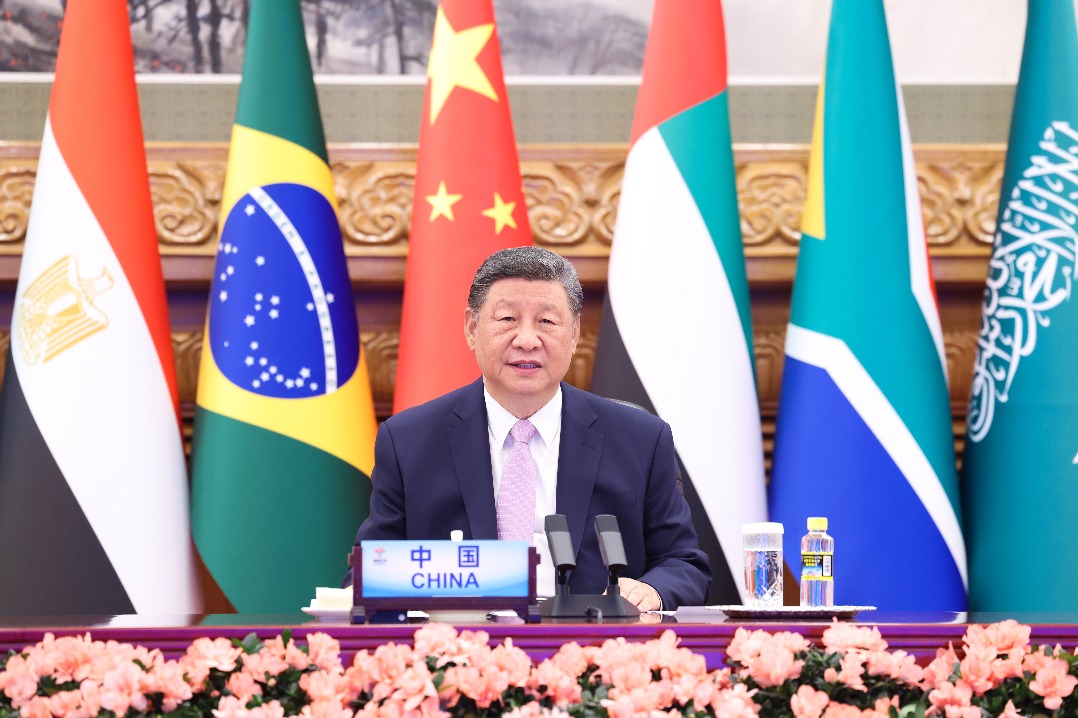Provincial border areas potential growth poles


The areas along the provincial boundaries in China offer opportunities as well as pose challenges to national development. These areas with complex geographical features such as mountains, plateaus and hilly terrain have been all but overlooked, either because they are difficult to access or their development requires huge amounts of money.
These geographical boundaries have contributed to fragmented policy implementation, often leading to inefficient resource allocation and market integration, and noncompetitive industry chains.
However, given the significant advances in infrastructure construction and the evolving economic landscape of major provincial cities, these areas are poised for transformation. Once seen as economic "breakpoints", these areas now find themselves at the crossroads of regional economies, offering new opportunities for development. A focused strategy to integrate such areas into the broader national development framework could create new growth poles and promote balanced, coordinated and inclusive development nationwide.
During the past few years, significant progress has been made in improving the infrastructure in these areas, particularly in the fields of transportation and digital connectivity. The expansion of high-speed railways, expressways, airports, broadband networks and data centers has made these areas more easily accessible, helping integrate the national and global markets. More importantly, the investments in infrastructure have paved the way for the digital transformation of such areas, by equipping them with the tools needed for industrial development.
Additionally, thanks to the growth of major provincial cities, many provincial border areas, once deprived of the benefits of urban agglomeration, now seem ready to leverage the radiating influence of multiple cities. The development of cities, such as Nanyang in Henan province, Ganzhou in Jiangxi province and Hengyang in Hunan province, reflects the success of the government's decentralization policy which fosters balanced growth in provinces. These cities are adding new momentum to the surrounding areas and creating opportunities for regional cooperation and development.
The need to transform the areas along the provincial boundaries into new regional growth hubs has never been more pressing. For example, the boundary region between Guangdong, Hunan and Jiangxi provinces has huge potential to become a new growth pole. And while Chenzhou is a nonferrous metals' hub, the lead-zinc mine in Shaoguan's Fankou is one of the largest in Asia.
These cities, with their strong industrial foundation, have the potential to become a key regional growth pole. By fostering inter-provincial cooperation, the Guangdong-Hunan-Jiangxi border region can become a model for how provincial border areas can harness their strategic advantages to create a dynamic, integrated economic zone.
Moreover, the region is home to the Hakka, Lingnan and Huxiang cultures, which create a unique socio-cultural fabric that can deepen collaboration among the neighboring provinces, especially because the revitalization of revolutionary base areas, along with a reinvigorated manufacturing sector, can drive a new wave of industrialization.
Another region with immense potential is the border area between Jiangsu, Anhui, Shandong and Henan provinces, where cities such as Suzhou, Xuzhou, Jining, Heze, Zaozhuang, Shangqiu, Bozhou and Huaibei are located. With a combined GDP of about 3 trillion yuan ($410 billion) in 2023 and covering over 70,000 square kilometers, the region is already a major economic player in China.
The cities within this area are uniquely positioned to benefit from the overlapping effects of national development policies, including the integration of the Yangtze River Delta region, the rise of the central region and the development of the Central Plains urban cluster. Given the legacy of Xuzhou's Chu-Han culture, Jining's Confucian history and Shangqiu's Han Dynasty heritage, the cities have what it takes to serve as catalysts for regional economic growth.
The region's key industries — coal, chemicals, textiles and machinery — are undergoing significant transformations, and the coordination of these industries across city-level and provincial boundaries can foster sustainable growth. Deepening cooperation among the cities in this border area will not only contribute to their individual growth but also create a cohesive, region-wide economic powerhouse.
To realize the full potential of the provincial border areas, China must adopt a multi-faceted approach. First, it should improve the regional industrial cooperation mechanisms. The experiences of Guangdong and other provinces, where different cities in the same province have jointly developed industrial parks, can be taken as examples to deepen cross-provincial cooperation, and foster synergies between more-developed and less-developed cities.
Second, the government should accord priority to inter-provincial coordination to create a unified, efficient market. Promoting coordinated development is essential for fostering high-quality regional development.
Third, the government should also establish special fiscal funds and seed funds to promote inter-provincial cooperation, in order to provide the necessary capital for fueling the development of the border areas. The funds, for instance, could be used to support infrastructure projects, industrial parks and joint ventures which contribute to the growth of the region's economy.
The development of provincial border areas presents a unique opportunity for China to further its goal of balanced, coordinated and inclusive regional development. By strategically investing in these regions, strengthening interprovincial cooperation, and aligning development with national economic goals, China can turn these once-neglected areas into vibrant, dynamic growth poles.
The author is a research fellow at the Development Strategy and Regional Economy Department, Development Research Center of the State Council.
The views don't necessarily reflect those of China Daily.
If you have a specific expertise, or would like to share your thought about our stories, then send us your writings at opinion@chinadaily.com.cn, and comment@chinadaily.com.cn.


































